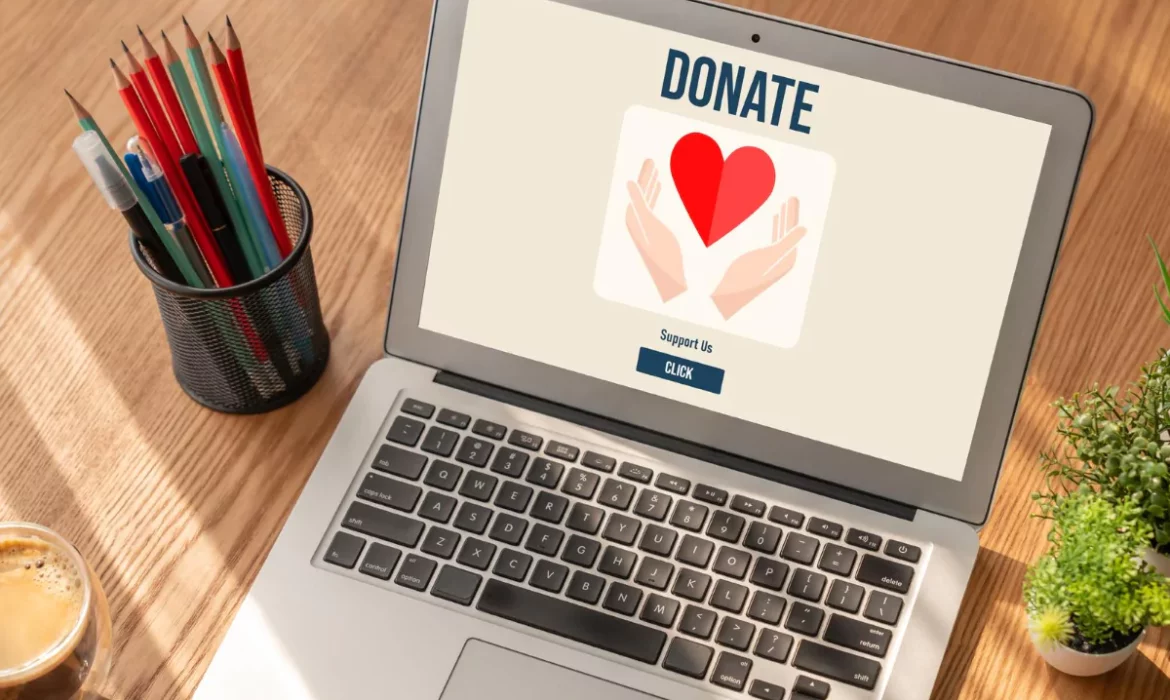
Hello, champions of change!
You’re at the forefront of making a difference, tackling social issues with passion and dedication. But we know that in the world of nonprofit organizations, resources are often stretched thin, and getting your message out there can be a real challenge.
That’s where we step in with something that can truly revolutionize your outreach efforts: digital marketing.
It’s not just about being online; it’s about creating connections, sparking conversations, and driving your mission with the power of the digital world.
In this comprehensive guide, we’ll delve into the transformative role of digital marketing in the nonprofit sector, offering insights and strategies to help you amplify your impact.
What is Digital Marketing for Nonprofits?
At the heart of every nonprofit’s mission lies the need to connect, engage, and inspire. Digital marketing is the bridge that links your cause to the global community.
It’s an umbrella term that covers all your online marketing efforts – from the stories you share on social media to the emails you send, from the content on your blog to the ads you run.
It’s about using the vast expanse of the internet to spread your message further and wider than ever before. But it’s more than just broadcasting information.
Digital marketing for nonprofits is about creating a dialogue, building relationships, and fostering a community that’s rallied around your cause. It involves a range of strategies and tactics, each with its unique strengths:
- Social Media Marketing: This is where you can share the heart and soul of your organization. Platforms like Facebook, Instagram, and Twitter offer a space to tell your story, engage with supporters, and build a community around your cause.
- Email Marketing: Direct and personal email marketing allows you to keep your supporters in the loop, share updates, and make appeals for support.
- Content Marketing: Through blog posts, videos, and other forms of content, you can educate, inform, and inspire your audience, providing value and deepening their connection to your cause.
- Search Engine Marketing: This includes SEO (Search Engine Optimization) and paid search advertising. It’s about making sure that when someone looks up a cause like yours, they find you easily.
- Analytics and Data-Driven Strategies: Digital marketing provides valuable insights through data. Comprehending how your audience interacts with your content helps in refining your strategies and making informed decisions.
Looking For Digital Marketing Services to Grow Your Business? Let’s Connect.
6 Reasons Why Digital Marketing is Important for Nonprofits
In today’s digital-centric world, nonprofits need to harness the power of online platforms to maximize their impact. Here are six factors why digital marketing is indispensable:
1. Cost-Effective Outreach
Traditional marketing methods like printed collateral, TV, and radio ads can quickly eat into a nonprofit’s limited budget, often requiring thousands of dollars for substantial reach.
In contrast, digital marketing can achieve enhanced results with just a few hundred dollars. For example, a nonprofit focusing on environmental conservation used targeted Facebook ads with a budget of $500.
This approach not only increased their event attendance by 75% but also brought in a significant number of new online followers, all while being able to track every dollar spent for its effectiveness.
2. Expanding Your Reach
The standout of digital marketing lies in its ability to transcend geographical barriers. A local animal shelter, for instance, used Instagram to share stories of pets needing homes.
By leveraging hashtags and engaging content, they reached animal lovers across the country, resulting in increased adoptions and nationwide support, something that would have been impossible with local flyers or billboards.
3. Building Stronger Relationships
Digital marketing opens up avenues for two-way communication, fostering deeper connections with your audience. A literacy nonprofit used Twitter to start conversations about literacy challenges, encouraging followers to share their stories.
This approach not only increased engagement but also helped the nonprofit understand their community’s needs better, leading to more targeted program development.
4. Enhancing Fundraising Efforts
Online platforms offer innovative ways to fundraise. For example, a small health-focused nonprofit launched a crowdfunding campaign with compelling video content illustrating its impact.
This digital approach allowed them to reach a wider audience, including international donors, and exceed their fundraising goal by 40%.
5. Boosting Visibility and Awareness
In the crowded online space, standing out is crucial. A women’s rights organization improved its online visibility by implementing SEO strategies on its website.
By optimizing their content with relevant keywords, they saw a 60% growth in website traffic, leading to more awareness and engagement for their cause.
6. Data-Driven Insights for Better Strategies
The proficiency to track and analyze digital marketing efforts is invaluable. A community arts program used Google Analytics to understand which of their online campaigns were most effective.
This data-driven approach helped them refine their strategies, resulting in a 30% boost in online donations.
Also Read: Lost in the Data Deluge: Why Clear Reporting is Key to Digital Marketing Success
Creating an Effective Nonprofit Digital Marketing Strategy
A well-crafted digital marketing strategy is vital for nonprofits to effectively communicate their mission and engage their audience. Here’s how you can build a strategy that resonates and delivers results:
1. Define Your Goals
Begin by establishing clear, specific objectives for what you want to achieve through digital marketing.
Whether it’s increasing donor engagement, boosting event attendance, or raising awareness about a new initiative, your goals should be aligned with your overall mission.
Use the SMART framework to ensure your goals are Specific, Measurable, Achievable, Relevant, and Time-bound.
For example, rather than a vague goal like “increase awareness,” aim for something more tangible, such as “gain 1,000 new followers on our social media platforms within three months.”
2. Know Your Audience
Understanding who you’re communicating with is crucial. Conduct audience research to gather insights into their demographics, interests, online behaviors, and preferred communication channels.
This can involve analyzing social media analytics, conducting surveys, and engaging in direct conversations. By apprehending your audience, you can tailor your messaging and content strategy to meet their preferences and needs.
For instance, if your prospects are primarily young adults, focus on visual content and platforms like Instagram and TikTok.
3. Choose the Right Digital Marketing Channels
Not every channel will be right for your nonprofit. Select platforms based on where your target audience is most active and the nature of your content.
For example, LinkedIn can be a great platform for professional networking and reaching corporate donors, while Instagram might be more effective for storytelling through visuals.
It’s also important to consider the type of content you can consistently produce; a YouTube channel requires a different commitment and skill set compared to a blog.
4. Develop Engaging Content
Content is the soul of your digital marketing strategy. Focus on devising content that is engaging, informative, and aligned with your mission.
This could include success stories, impact reports, informative articles, and behind-the-scenes glimpses of your work. Use various formats like videos, blogs, infographics, and podcasts to keep your audience engaged.
Remember, the key is to tell stories that resonate with your audience and highlight the impact of your work.
5. Optimize for Search Engines
SEO (Search Engine Optimization) is crucial to enhance your online visibility. Incorporate relevant keywords into your website content, blog posts, and meta descriptions.
Don’t forget to keep your website updated with fresh, mobile-friendly content. Tools like Google Keyword Planner assist you in determining the keywords your audience is searching for.
6. Implement Data Tracking and Analysis
Employ analytics tools to track the performance of your digital marketing efforts. This includes monitoring website traffic, engagement rates on social media, email open rates, and conversion rates.
By analyzing this data, you can achieve insights into what is working and what is not. This will allow you to make informed decisions and adjust your strategy for better results.
7. Cultivate Relationships with Supporters
Digital marketing offers a unique opportunity to build and strengthen relationships with your audience. Engage with your audiences on social media, respond to comments, and personalize your email communications.
Recognize and thank your donors and volunteers publicly. These efforts can foster a sense of community and loyalty towards your nonprofit.
8. Continuously Adapt and Improve
The digital landscape is continually evolving, and so should your strategy. Stay educated about the latest trends and finest practices in digital marketing.
Be open to experimenting with new platforms or tactics and learn from both successes and failures.
Regularly review and refine your strategy to ensure it remains effective and relevant. The ideal approach is to collaborate with an experienced digital marketing agency.
10 Additional Valuable Tips for Nonprofit Digital Marketing Success
Beyond the core strategies, there are additional tactics that can immensely enhance the effectiveness of your nonprofit’s digital marketing efforts. Here are some valuable tips:
1. Leverage Storytelling
Stories have the power to connect emotionally with your audience. Share real-life stories of the people or communities you’ve helped.
This could be via blog posts, videos, or social media stories. For example, a short video featuring a beneficiary talking about how your nonprofit changed their life can be incredibly impactful.
2. Utilize User-Generated Content
Inspire your supporters to convey their own stories and experiences related to your cause. This not only provides authentic content for your platforms but also helps build a community around your cause.
For instance, create a hashtag for a campaign and ask your followers to share their related posts using that hashtag.
3. Focus on Mobile Optimization
With the increasing prevalence of smartphones, ensure your website and emails are mobile-friendly. This means fast loading times, responsive design, and clear, concise content that’s easy to navigate on a smaller screen.
4. Implement A/B Testing
Test different versions of your emails, web pages, and ads to see what resonates best with your audience. For example, you might test two different email subject lines to see which one leads to a higher open rate.
5. Use Data-Driven Insights
Regularly analyze your digital marketing efforts using tools like Google Analytics. Look at what content is most engaging, which emails have higher open rates, and where your web traffic is coming from. Use these insights to refine your strategy.
6. Engage in Community Building
Use your digital platforms to create a sense of community among your supporters. This could be through interactive content, live Q&A sessions, or online forums where supporters can connect and discuss.
7. Collaborate with Other Organizations
Partner with other nonprofits or companies that align with your mission.
This will extend your reach to a wider audience and enhance your credibility.
For example, co-hosting a webinar with a well-known organization in your field can attract their audience to your cause.
8. Stay Up-to-Date with Digital Marketing Trends
The digital landscape is constantly evolving. Keep yourself informed about the latest trends and tools in digital marketing.
This could mean exploring new social media platforms, experimenting with emerging technologies like augmented reality, or adopting new content formats.
9. Prioritize Accessibility
Confirm that your digital content is accessible to everyone, including people with disabilities. This involves using alt text for images, providing captions for videos, and ensuring your website is navigable with screen readers.
10. Seek Feedback and Adapt
Regularly ask for feedback from your audience and be open to making changes based on their suggestions. This shows that you value their input and are committed to meeting their needs and expectations.
Empowering Your Mission: A Digital Leap Forward
As we wrap up this insightful journey through the realm of digital marketing for nonprofits, it’s clear that the digital world offers immense opportunities for growth, engagement, and impact.
Embracing the strategies and insights shared here can propel your nonprofit into a new era of connectivity and influence. Remember, the path of digital marketing is one of constant evolution and learning.
For those nonprofits ready to take their digital marketing to the next level, EvenDigit stands ready to be your guide and ally. Our expertise in crafting compelling, results-oriented digital marketing campaigns is just what you need to amplify your voice and deepen your impact.
Let’s join forces to harness the transformative power of digital marketing and turn your vision into action. Together, we can create waves of positive change across communities and causes worldwide.
EvenDigit
EvenDigit is an award-winning Digital Marketing agency, a brand owned by Softude (formerly Systematix Infotech) – A CMMI Level 5 Company. Softude creates leading-edge digital transformation solutions to help domain-leading businesses and innovative startups deliver to excel.
We are a team of 70+ enthusiastic millennials who are experienced, result-driven, and hard-wired digital marketers, and that collectively makes us EvenDigit. Read More




